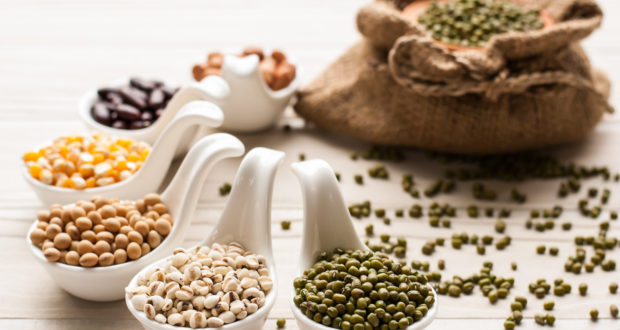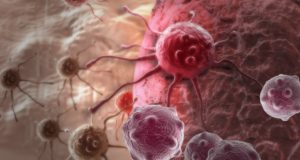At first glance, beans don’t seem to be the most glamorous of foods, and may not appear to be an excellent source of nutrition. Their bland appearance, however, belies their numerous health benefits. By learning more about beans and their positive impact on your wellbeing, you might find yourself tempted to purchase more than one type of this underappreciated food.
Beans, which are also known as legumes, are found in a number of flavors and colors. They possess both unique and overlapping characteristics, which are further explained below:
Black Beans
Black beans may seem like a fairly common food today, but they were only introduced to Europe in the 1500s. They are rich in protein and fiber, which proves very useful to the body’s digestive system. Together, these two nutrients help move food through the stomach and intestine at a healthy rate. As a result, neither of the organs is overworked when digesting food.
Black beans also help you to maintain a healthy blood sugar. As your body digests food, your digestive system breaks it up into smaller parts. Occasionally, the body will absorb food in uneven amounts, which can cause simple sugar to rapidly rush into the bloodstream. When this occurs, your blood experiences a sudden rise in its sugar count, which may cause blood sugar spikes. On the other hand, your blood stream might absorb sugar in insufficient quantities, which can cause an unwanted drop in your blood sugar. The protein and fiber from black beans enable the body to break down food at a steady pace, thereby preventing both scenarios.
In addition to improving the efficiency of your digestive tract, black beans can help keep your cardiovascular system safe from disease. Black beans are brimming with soluble fiber, a nutrient with firmly established track record of lowering bad cholesterol. This type of fiber can also knock out free radicals and reduce inflammation within your arteries, effectively lowering your odds of developing coronary disease. Recent studies have even found that black beans can root out tumors in the colon that may become cancerous.
One cup of cooked black beans contains 64% daily value (DV) of folate, 60% DV of fiber, 38% DV of manganese, 30% DV of magnesium, 30% DV of protein, 24% DV of phosphorus, 28% DV of thiamin and 20% DV of iron.
Soy Beans
You would be hard-pressed to find a legume with more nutrients than soy beans. Just one cup of cooked soy beans (without added salt) has 10 grams of fiber (41% daily value) and 29 grams of protein (57% DV). The parade of nutrients doesn’t stop there – the same serving size has 71% daily value of manganese, 49% DV of iron, 42% DV of phosphorus, 41% DV of vitamin K, 37% DV of magnesium, 35% DV of copper and 25% DV of potassium.
Like black beans, soy beans can protect against heart disease by lowering bad cholesterol with its soluble fiber content. This legume also contains polysaturated fats, which produce hormones that enable the heart to run more efficiently. Soy beans also feature insoluble fiber, which allows waste to quickly pass through your digestive tract. Research suggests that soybeans can alleviate and prevent a number of health issues related to the digestive system, ranging from constipation and hemorrhoids to diverticular disease and colon cancer.
Black Eyed Peas
This type of bean might have a somewhat funny and misleading name, but it has more than enough nutrients to make it part of a well balanced diet. A serving size of one cup of cooked black eyed peas contains 89% DV of folate, 45% DV of fiber, 41% DV of manganese, 27% DV of phosphorus, 24% DV of iron, 23% DV of magnesium, 23% DV of copper.
Black eyed peas are a great option for those with digestive problems, as they are a great source of fiber, a nutrient well-known for its ability to help your digestive system. If you’re seeking an additional source of potassium, black eyed peas are a good bet; one cup of this bean has 14% DV of potassium. Potassium is a do-everything nutrient, as it can keep your blood pressure at healthy levels while strengthening your bones and muscles. And if you’re worried about your waistline, there is more good news – 1 cup of cooked black eyed peas only contains 200 calories and 1 gram of total fat.
Great Northern Beans
Another type of bean with a memorable name is great northern beans. These beans are frequently used in baked bean dishes and various soups. You can buy them in either canned or dried form at the supermarket.
Great northern beans are a protein and fiber powerhouse; one cup of canned great northern beans has 51% DV of fiber and 39% DV of protein. Fiber and protein aren’t their only nutrients, as a cup of this legume will also net you 53% DV of manganese, 53% DV of folate, 36% of phosphorus, 33% of magnesium, 23% DV of iron and 14% DV of both calcium and vitamin B6 (these numbers are also from canned great northern beans). In addition, a cup of great northern beans has only 1g of fat. Feel free to stock up on this bean, as they can last up to one year in storage; just make sure to place them in an airtight container in a cool, dry place.
Lima Beans
Talk about versatility – lima beans are sold canned, frozen, dried and fresh in their shells. Generally, small lima beans in their dried form have a relatively mild taste, whereas baby and regular size lima beans have a mushy texture and buttery taste.
In whatever form you purchase lima beans, you can rest assured that they will provide you with a bountiful amount of nutrients needed for good health. One half cup of canned lima beans provides a shopper with 43% DV of manganese, 18% DV of fiber, 15% DV of vitamin C, 11% DV of iron and 10% DV of potassium.
A person on a diet may have no better friend than lima beans, as a ½ cup serving of canned lima beans has only 88 calories. Lima beans keep your bad cholesterol and blood pressure at healthy levels, and can help lower your risk or heart disease, stroke, and kidney disease.
Kidney Beans
As you probably have guessed, kidney beans get their name from their reddish and somewhat long appearance, which resembles the human organ of the same name. Kidney beans can also be found with white coloring. As with lima beans, a consumer has a number of options when buying kidney beans, as they are found in fresh, frozen, dried and canned forms. These beans have a fairly bland taste compared with their legume counterparts. This one drawback, however, is negated by their wide use in a number of dishes, including chili, refried beans, casserole and salads.
Kidney beans contain all of the health benefits expected from a legume; one cup of canned kidney beans contains 54% DV dietary fiber, 27% DV of protein, 23% DV of phosphorus, 23% DV of folate, 22% DV of manganese, 17% DV of iron and 17% DV of potassium. It should be noted that kidney beans are fairly high in sodium (32% DV for a one cup serving).
The high amount of folate in kidney beans is good for expecting mothers, as this nutrient has been shown to help prevent birth defects. The fiber in kidney beans is great for your digestive tract, and their protein is used by your body to bolster your heart muscles.
Pinto Beans
Pinto beans are a key ingredient for a number of well-known dishes, including refried beans, beans and rice, chili and various soups and stews. One cup of canned pinto beans contains 44% DV of fiber, 36% DV of folate, 27% DV of manganese, 24% DV of selenium, 22% DV of phosphorus, 19% DV of iron and 17% DV of potassium. The main beneficiaries of pinto beans are your heart, digestive tract and blood pressure.
Other Beans to Consider:
- Red Beans
- Lentils
- Chickpeas
- Cranberry Beans
- Fava Beans
- Corona Beans
- Navy Beans
- Marrow Beans
 Natural Knowledge 24/7 Educate yourself with nutrition, health and fitness knowledge.
Natural Knowledge 24/7 Educate yourself with nutrition, health and fitness knowledge.






